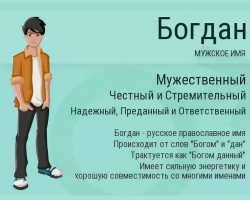Artificial fertilization is a real chance of barren couples to find parental happiness or an unnatural procedure, the chances of whose success are negligible?
Content
- The value of artificial fertilization
- Video: Conception in vitro
- Methods of artificial fertilization
- Eco Method of fertilization
- Artificial fertilization procedure
- Video: Extracorporeal fertilization. Komarovsky
- Extracorporeal fertilization for and against
- How much is artificial fertilization?
- Artificial fertilization of lonely women
- Artificial fertilization at home
- The problem of artificial fertilization
- Artificial fertilization: reviews
- Video: types of artificial insemination
Motherhood is the greatest happiness and joy for a woman, her calling and the most natural state. When, for some objective reasons, a woman cannot become a mother, artificial fertilization comes to the rescue. What is it, what are the methods of artificial fertilization, what are the features of the procedure, as well as other worrying women, we will consider issues in this article.
The value of artificial fertilization
Artificial fertilization is a modern method of solving the problem of infertility, when conception of a child cannot occur naturally. The procedure of artificial fertilization can be carried out for a number of reasons in which both partners and both are sick with infertility.

The main indications for artificial insemination are:
- polycystic ovary
- endometriosis
- the low quality of the partner’s sperm, which can manifest itself in the inactivity of sperm, their low concentration and in a large number of pathological units
- hormonal infertility
- pipe infertility
- infertility, the causes of which are not established

Thanks to progress in medicine, hundreds of thousands of barren married couples can finally know the joy of motherhood and paternity, because artificial fertilization gives the opportunity to have children in forms of infertility, which in the past put a cross on reproductive function.
Video: Conception in vitro
Methods of artificial fertilization
When it comes to artificial fertilization, many people think about the common and popular IVF procedure. In fact, there are several methods of artificial solution to the problem of infertility:
- ISM is a method in which her sperm tolerates her sperm. This technique is used in cases where the reproductive functions of a woman are not impaired and she cannot become a mother due to the low quality of her husband’s sperm or when the mucus in the woman's vagina is an aggressive environment for the existence of sperm and they die without reaching the egg

- ISD - if the husband’s sperm is unsuitable for conception or it is completely barren, then the spouses are offered the method of artificial fertilization of the donor’s sperm. The very procedure of this method is practically no different from the previous one: a woman also introduces sperm into the uterus, but only her husband is not a sperm donor

- Gift - when the cause of infertility lies in the fact that the woman’s egg does not go into the fallopian tube for fertilization, the method of intrathubarny transfer of gametes is effective. It consists in transferring an egg previously taken from a woman, connected by artificially with male spermatozoa. Male germ cells can belong to both the spouse and the donor

- Zift is a method in which a fertilized egg is introduced into the uterus prepared by hormones. Previously, a woman takes a healthy egg, suitable for conception by the egg and fertilize it outside the female body with spermatozoides. After that, the embryo is introduced through the cervix

- Ixi is an effective method of artificial insemination, which involves the fertilization of the egg with a sperm using the thinnest needle. The most active sperm is removed through the puncture of the testicle and is introduced into the egg

- IVF is the most common type of egg fertilization outside the woman’s body, after which the embryo is implanted into the uterus

Eco Method of fertilization
Extracorpective fertilization is a modern reproductive technology, which is most often resorted to not only in our country, but throughout the world. What explains such the popularity of the method? Firstly, such a technique gives the highest results; Secondly, with the help of IVF, you can achieve pregnancy even in very difficult cases of infertility, when both partners have serious problems of reproductive function.

Artificial fertilization procedure
For eco, several eggs are necessary. But since only one egg can form in a woman’s body in one cycle, the number of egg production is stimulated by hormones.
When, with the help of ultrasound, it is determined that the ovary is increased and eggs were formed in it, they are extracted. After that, oocytes are washed from follicular fluid and placed in an incubator, where the eggs are located until artificial fertilization.
If a woman does not succeed in getting eggs, then donor is used.

On the same day, spermatozoa is taken, which are obtained by masturbation or interrupted sexual intercourse. In the resulting sperm, spermatozoa is distinguished and the most active of them are selected. After that, the required amount of active spermatozoa is added to the test tube with eggs, 100-200 thousand per egg. The use of the donor sperm is also possible.

Within 2-3 hours, the sperm fertilizes the egg. Further, the resulting embryo is placed in a favorable environment, where it is from 2 to 6 days. All this time, the necessary vitamins, physiological ions, substrates and amino acids are introduced into the test tube. After that, the direct transfer of embryos is carried out to the uterus, which is carried out in a matter of minutes on the gynecological chair.
If a woman cannot bear the pregnancy herself, then they resort to surrogate motherhood.
Video: Extracorporeal fertilization. Komarovsky
Extracorporeal fertilization for and against
Despite the fact that IVF opens up the opportunity to have children for people with infertility, this procedure can also have negative consequences that sometimes go into the category of deplorable:
- hormonal background violation
- hypersostimulation of the ovaries
- farm development of the fetus
- multiple pregnancy, in which it is necessary to kill "extra" embryos for survival at least one or two

In addition, the IVF procedure is an expensive event that not everyone can afford and, sometimes, childless couples have to abandon any hope of becoming parents, since the amount for them is simply unbearable.
On the other hand, in society there is a biased attitude to the artificial fertilization procedure - “Children from the test tube” are mistakenly mistaken for inferior and lagging behind in development.

Today, the IVF procedure is in many ways improving. New technologies are used, an accurate dosage of hormones is established, which provides the necessary processes and at the same time causes the smallest harm to the woman's body.
It is also important that it is extremely rarely placed in the uterine cavity of a large number of embryos, as a rule, only two, which prevents the need to eliminate excess embryos. And the very joy of motherhood exceeds all possible risks and undesirable consequences that the IVF procedure can cause.
How much is artificial fertilization?
The price of the issue depends on the method of artificial insemination. It can vary in various clinics, but on average a price list looks like this:
- Yoke from 28 to 40 thousand rubles
- IVF from 40 to 100 thousand rubles
- ICSI from 100 to 150 thousand rubles

Other methods of artificial insemination in Russia are not common due to lower efficiency.
Artificial fertilization of lonely women
Women who do not have a partner for conception of a child, but desperately wishing to start a child, will help the procedure for artificial insemination. During this procedure, active spermatozoa of the donor is placed in the woman’s uterus, after which the egg is fertilized.
Immediately before the procedure, a woman undergoes examinations and takes tests, if necessary, hormonal stimulation is carried out.

Artificial fertilization at home
The procedure of artificial insemination can be carried out at home. Its essence is that a dose of sperm is introduced into the woman’s uterus with the help of a syringe and a catheter. Thanks to this manipulation, the chance of fertilization increases significantly, because all spermatozoa go to the egg, while with natural fertilization, part of the seed is poured and neutralized by the mucus of the vagina, even without falling into the uterus.

To carry out artificial insemination of the house, sterile ones are needed:
- syringe
- catheter
- gynecological mirror
- pipette
- disinfectant
- tampons
- towel
- gynecological gloves

It is important to carry out the procedure during ovulation, which can be determined using a special test.
The problem of artificial fertilization
A detailed briefing on how artificial fertilization of the house is carried out by a gynecologist, but it is important to understand that the implementation of such an important process at home may be the risk of the uterine cavity of various infections, due to the possible non -sterility of the devices used.
Artificial fertilization: reviews
After analyzing the reviews of women who decided to artificial insemination, several key aspects of the procedure can be distinguished:
- pregnancy does not always occur. There are couples who have decided on IVF five to six times in a row, but never achieved the desired
- many barren women are worried about the moral aspect, because the problem of artificial insemination still causes discussions in various circles, especially from the church, which considers such events unnatural, and families who do not have children condemns, since they should carry their cross and not go against the will of God

- artificial fertilization is a colossal load on a woman’s body both in a moral and physical sense
- despite the problems that married couples are faced with the still resolved artificial insemination, a positive result and the joy of having a child exceeds all risks and negative points and many stops only the price of the procedure from starting the child with artificially repeatedly








Thank you, very relevant information for me. The doctor offers me IVF, but I don’t want to, I heard a terrible one (but the clinic in Moscow is good to choose is also a problem, it turns out ...
Olga, go to+31 Petrovsky gates, my husband and I entered into an agreement with them on IVF the first time - so I liked it there. The prices there are quite affordable, you can choose an IVF program at your discretion and desire - to choose the usual programs as many as more than a dozen auxiliary reproductive technologies (to increase the chance of a positive result), I am now on hormone therapy, of course, far, but only hopes are only hopes For the best - a doctor, honey. staff and the very situation in the clinic are tuned for the best)
The article is detailed, everything is clearly described quite clearly, all this information was given to me at the primary consultation in the clinic "Mom", this is a very good and friendly center for the patient. I have already undergone a full examination in it and my husband and are now preparing for IVF. I really like the doctors of this clinic and their attitude to patients. They do not give empty hopes, explain the risks and do everything so that we become parents.
It is very terribly written about killing (now in good clinics they are planted 1, a maximum of 2 embryos, so that no one has to be killed. I did IVF in my mother in 2016 at Samoilova, planted 1 embryo of good quality, and he has taken root! Now he is already learning to walk )